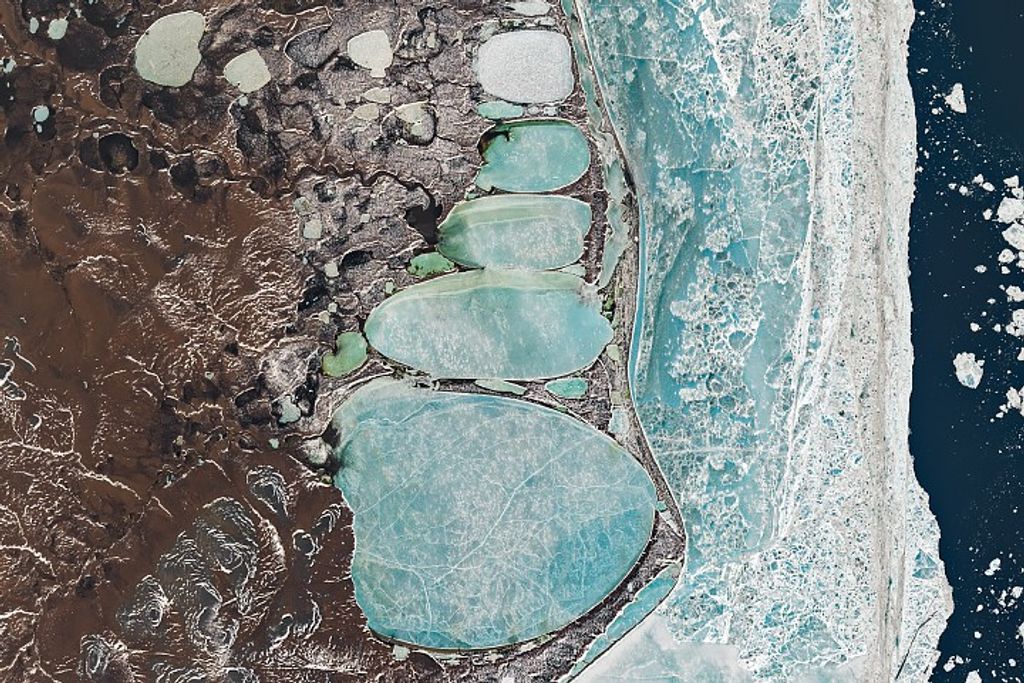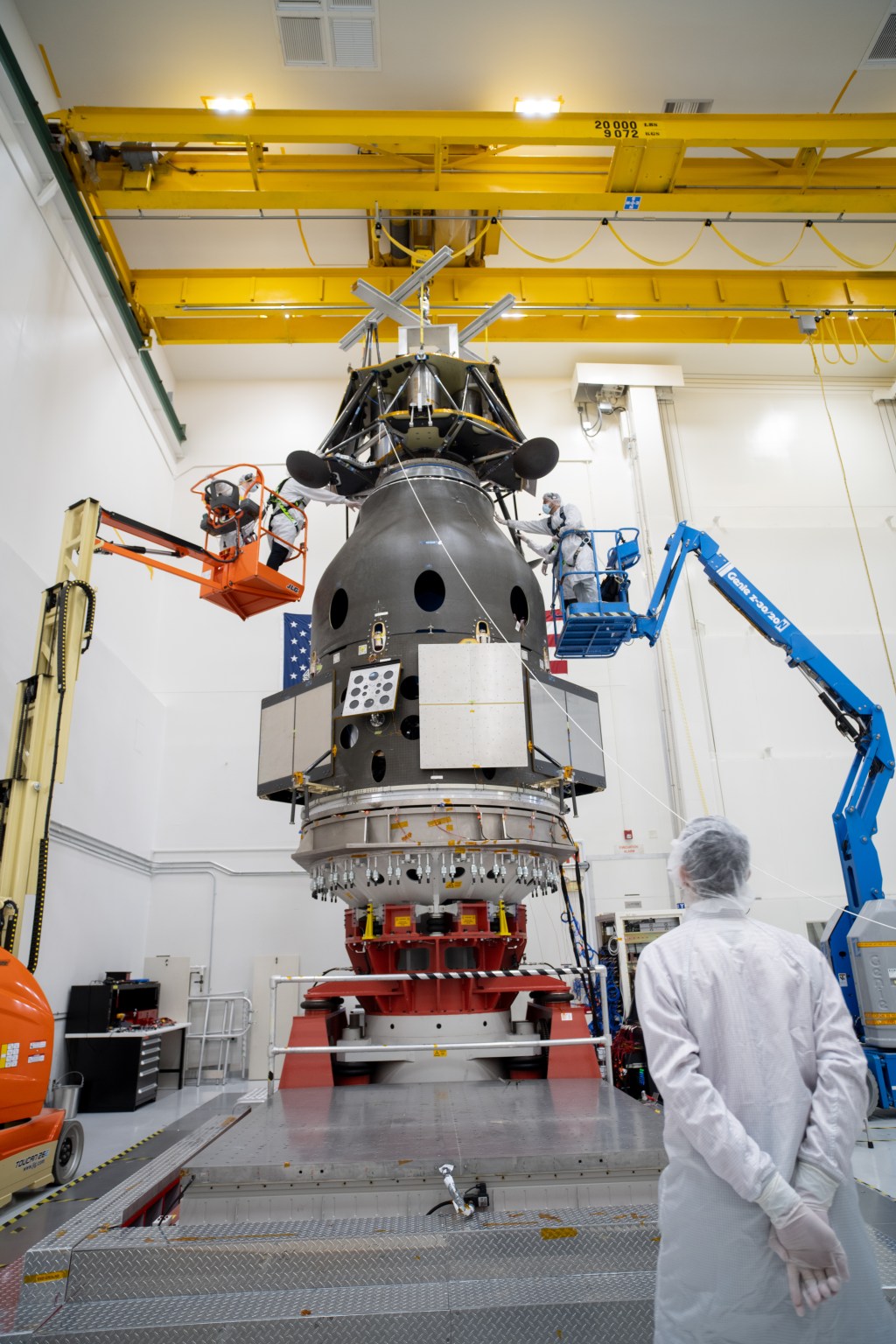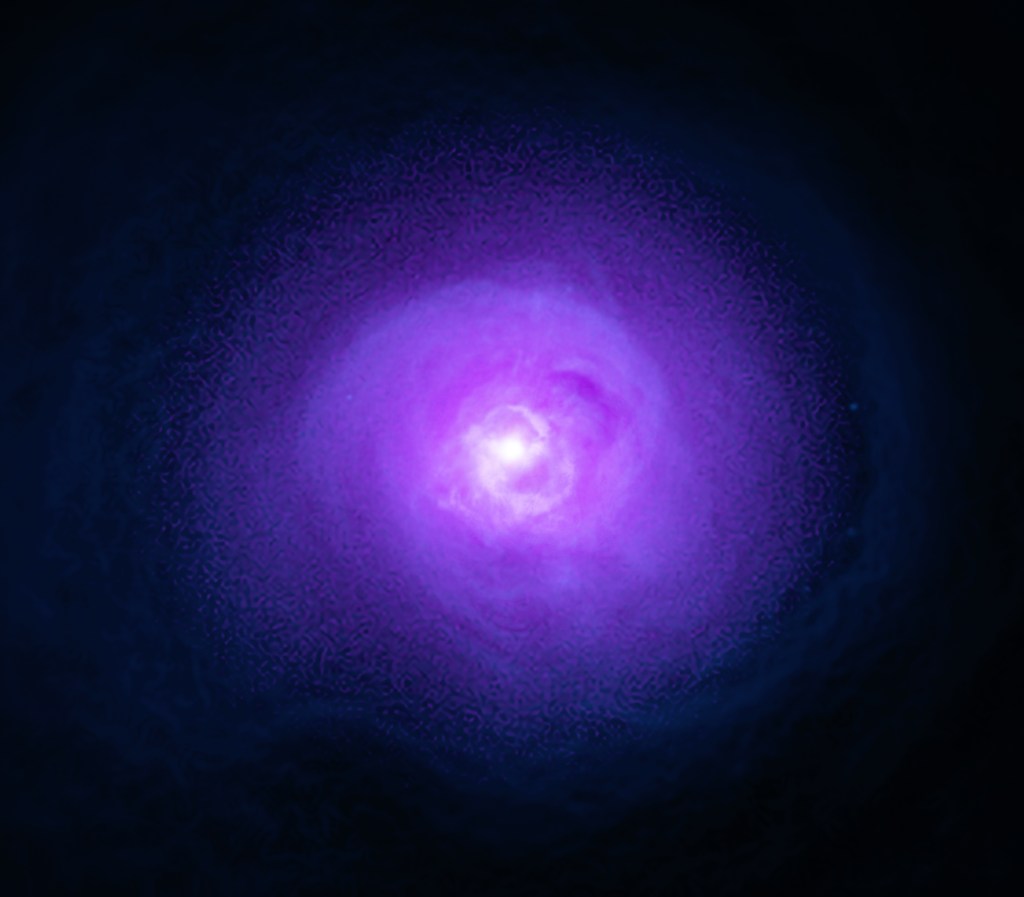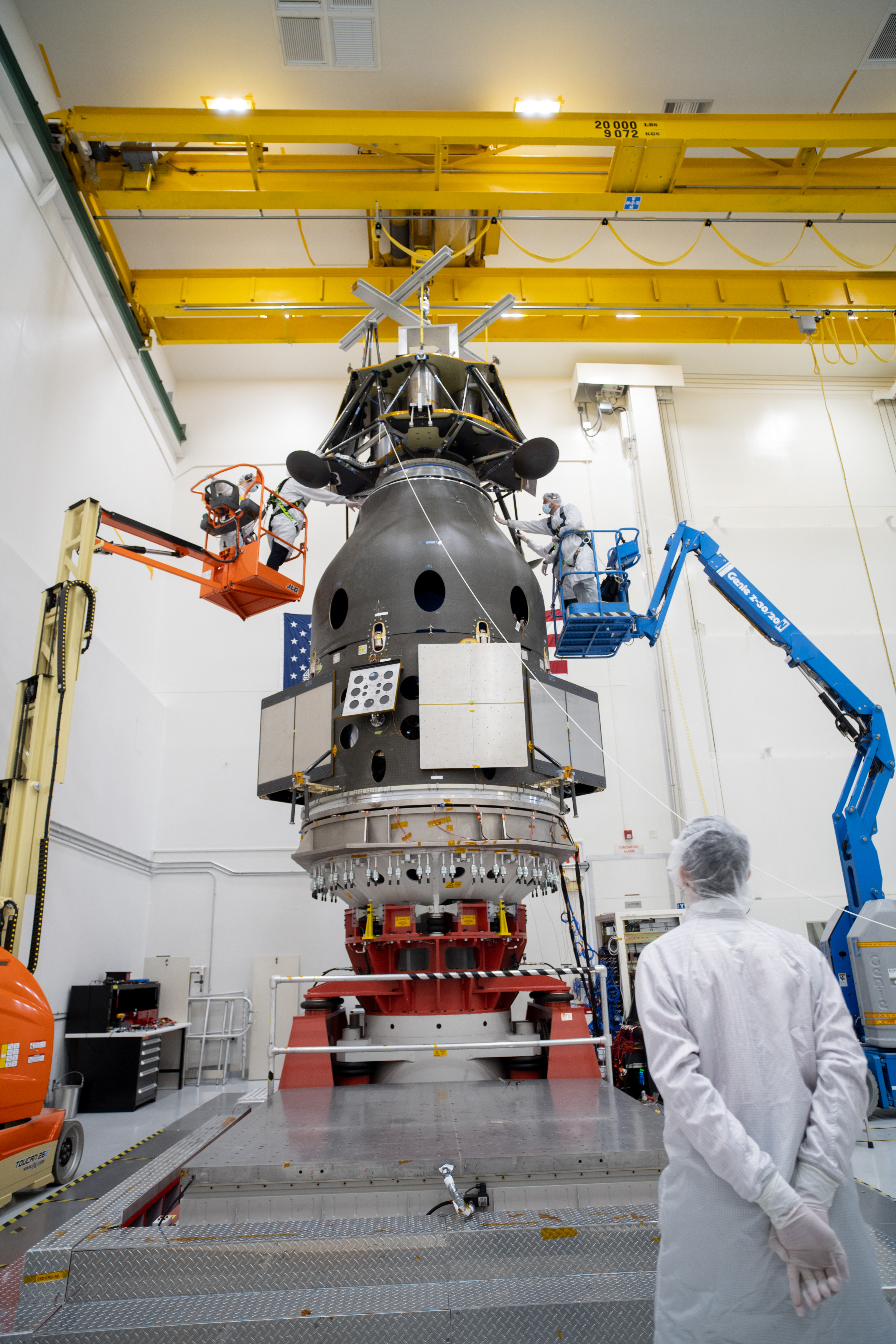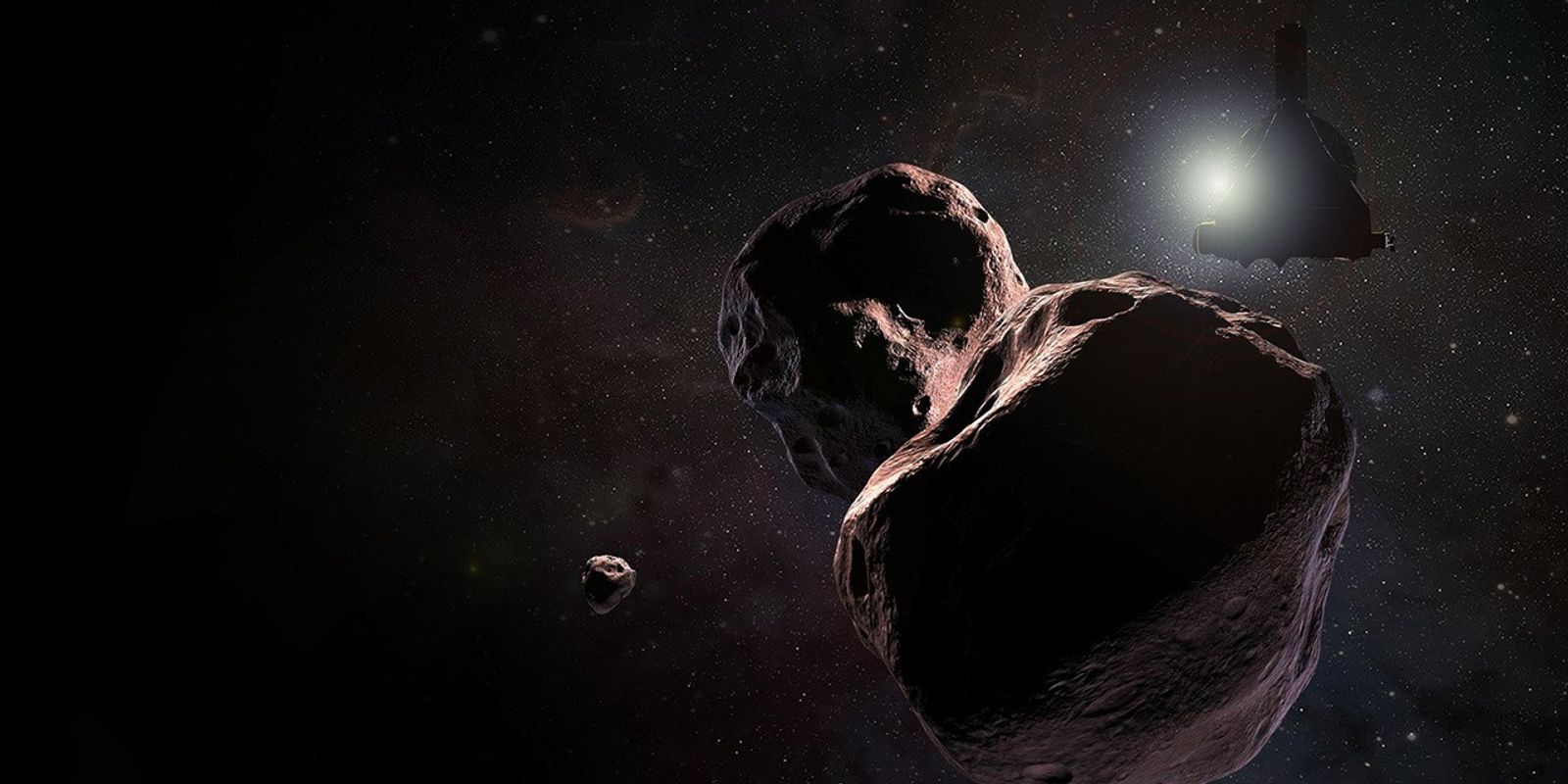Cassini Significant Events 04/02/08 - 04/08/08
April 10, 2008
(Source: Cassini Project)
The most recent spacecraft telemetry was acquired on Tuesday, Apr. 8, from the Goldstone,
California tracking complex. The Cassini spacecraft is in an excellent state of health
and all subsystems are operating normally. Information on the present position and speed of the Cassini spacecraft may be found on the "Present Position" page at: http://saturn.jpl.nasa.gov/operations/present-position.cfm.
Wednesday, April 2 (DOY 093)
The AACS team has been performing analysis on the recent Enceladus flyby data in order to
reconstruct the density of the Enceladus plume as a function of altitude based on the
torques imparted to the spacecraft by the plumes. AACS density estimates made using two
different approaches deviate from each other by less than 10%. It is calculated that the
peak density encountered is 6.05 +/- 0.25 x10-12 kg/m3. The latest calculations for the
time and altitude of peak density are approximately Enceladus closest approach + 45
seconds and 450 km, respectively.
Thursday, April 3 (DOY 094):
The first of the principal science activities of the day was a calibration of the
Magnetometer subsystem (MAG) sensors. Calibration rolls for this instrument are
performed roughly once every three weeks.
The Instrument Operations Team (IO) here at JPL hosted an Instrument Operations Working
Group meeting. The agenda included an overview of the new File Release Notification
System, the process for how the software is to be used in support of sequence
development, and a proposal for assisting the teams with a method of automatically
filling out on-line forms.
Friday, April 4 (DOY 095):
Uplink Operations sent commands to the spacecraft today for a RADAR mini-sequence and the
Mimas live update, both to execute on DOY-102. All files have been confirmed to be
on-board.
First among the day's science activities was an Ultraviolet Imaging Spectrograph (UVIS)
observation of a stellar ring occultation, followed by an observation in the Imaging
Science (ISS) small satellite monitoring campaign. Then the Visual and Infrared Mapping
Spectrometer (VIMS) turned towards Saturn to study the distribution of methane in the
planet's atmosphere. After the subsequent Composite Infrared Spectrometer (CIRS) scan of
the unlit rings, Cassini pointed its antenna back toward Earth to relay the day's data.
Tomorrow, ISS will perform the first of two observations of Ymir designed to pin down the
rotation rate of this small satellite and study any longitudinal variations across its
surface.
Sunday, April 6 (DOY 097):
An AACS Reaction Wheel Assembly (RWA) friction test of the backup wheel, RWA-3, was
completed today. In this test, performed every six months, the RWA is spun up to 600 rpm
in both directions - clockwise and counterclockwise - and timed as it is allowed to run
down to zero. Results, as compared to the last test performed October 28, 2007, show a
slight improvement in both clockwise and counterclockwise directions. The rundown times
are both above 40 minutes, much the same as for the test conducted a year ago, in April,
2007.
Monday, April 7 (DOY 098):
Back on Mar. 24, the Target Working Teams (TWT) and Orbiter Science Teams (OST) delivered
integrated products for S44, the sequence Science Planning Attitude Spread Sheet (SPASS)
and Sequence Phase List of Ancillary Files (SPLAF) files were delivered to the teams, and
work began on pointing designs. Today, the official kick-off meeting was held for the
S44 Science Operations Plan (SOP) process. The process will run for an additional 12
weeks and conclude on July 7. This sequence is of particular interest as it contains the
Enceladus 5 flyby.
In addition to activities for S44, the third and final SOP delivery port for S42 occurred
today. The handoff package will be transferred to Uplink Operations on Apr. 18 and final
sequence development will begin on the 21st.
During the past couple of months, Radio Science (RSS) team members have been looking into
utilizing the Australian Telescope Compact Array (ATCA) at Narrabri to provide Ka-band
support for the RSS observations that occur over Canberra while DSS-34 is down for
upgrades and maintenance. RSS would be using DSS-47, an array of six 22-m antennas.
All the relevant details have been worked out amongst the Project, the DSN and ATCA, and
an initial request for tracking was submitted to ATCA. Due to cost, either withdrawing
the request or keeping the activities to a minimum, including reduced amount of test time
was under consideration. RSS determined that the science objectives enhanced by Ka-band
are worth pursuing, and the facility and capability are worth demonstrating, so the team
opted for minimized tracks of 24 hours total, with the understanding that the support
will be on a best-efforts basis and the data quality is yet to be assessed.
An open loop Radio Science Receiver (RSR) was sent from Canberra to Narrabri, installed,
and successfully accessed by Radio Science personnel at JPL. The plan is for the RSR to
be shipped back to Canberra by the end of August, 2008. During the ATCA tracks, the RSR
will be remotely controlled and operated from JPL by the RSS Group. This group will also
be responsible for generating the RSR frequency predicts. The schedule for RSS use of
DSS-47 is considered tentative until confirmed. The proposal is that it include six
tracks occurring between DOY168-232 June 16 through Aug. 19. Independent of the Cassini
requests, proficiency tracks using the Cassini signal are also scheduled, one of which is
this Friday, DOY102 / April 11. Narrabri has tracked Cassini before, but not with an
open-loop receiver. The track on DOY 102 will be the first opportunity to acquire
open-loop Ka-band data during an actual occultation experiment, assess the data quality,
and compare it to DSS-34 data.
Tuesday, April 8 (DOY 099):
Science observations began today with ISS performing a second observation in a campaign
to study the satellite Ymir.
The Spacecraft Operations Office held a review for engineering activities to execute
during the S45 background sequence. 25,000 copies of the new Reading, Writing & Rings CD
have been received at JPL. These CDs include the entire contents of the K-4 language
arts program, "Reading Writing & Rings", as well as the "Saturn in your Kitchen and
Backyard" activities for grades 5-8, the "Ring World" planetarium show in English and
Spanish, and some Cassini lithographs, images, and web links for teachers, students, and
the public.
Reading Writing and Rings was presented at the following workshops at the National
Science Teachers Association (NSTA):
1) What's New for the Cassini Spacecraft at Saturn: Updates for the K-5 Classroom
2) Read-to-go Space Science Activities for the K-5 Classroom
3) Balancing Accessibility and Complexity: Strategies for Developing Science Materials
for the Primary Classroom
4) Reading, Writing and Rings presented by the Center for Mathematics and Science
Education, Arkansas NASA Educator Resource Center Northwest Partnership, Arkansas
Discovery Network.










